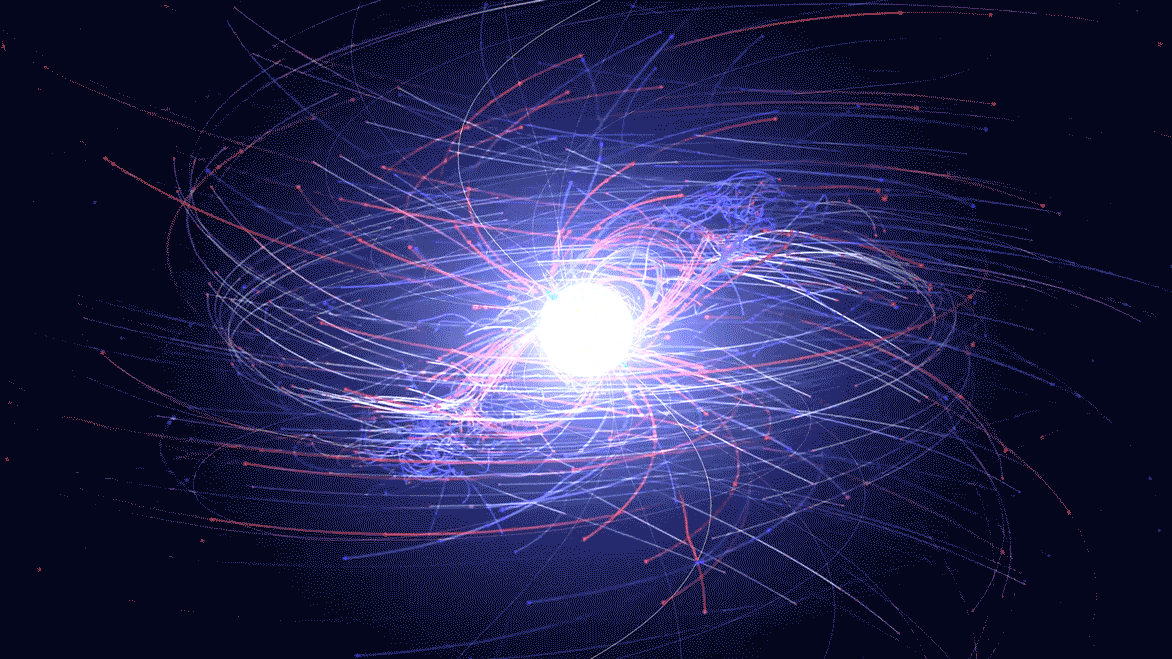The golden age of neutron-star physics has arrived

Powerful magnetic and electric fields whip charged particles around, in a computer simulation of a spinning neutron star. Credit: NASA's Goddard Space Flight Center
These stellar remnants are some of the Universe’s most enigmatic objects — and they are finally starting to give up their secrets.
Adam Mann
NATURE NEWS FEATURE 04 MARCH 2020
When a massive star dies in a supernova, the explosion is only the beginning of the end. Most of the stellar matter is thrown far and wide, but the star’s iron-filled heart remains behind. This core packs as much mass as two Suns and quickly shrinks to a sphere that would span the length of Manhattan. Crushing internal pressure — enough to squeeze Mount Everest to the size of a sugar cube — fuses subatomic protons and electrons into neutrons.
Astronomers know that much about how neutron stars are born. Yet exactly what happens afterwards, inside these ultra-dense cores, remains a mystery. Some researchers theorize that neutrons might dominate all the way down to the centre. Others hypothesize that the incredible pressure compacts the material into more exotic particles or states that squish and deform in unusual ways.
See full text